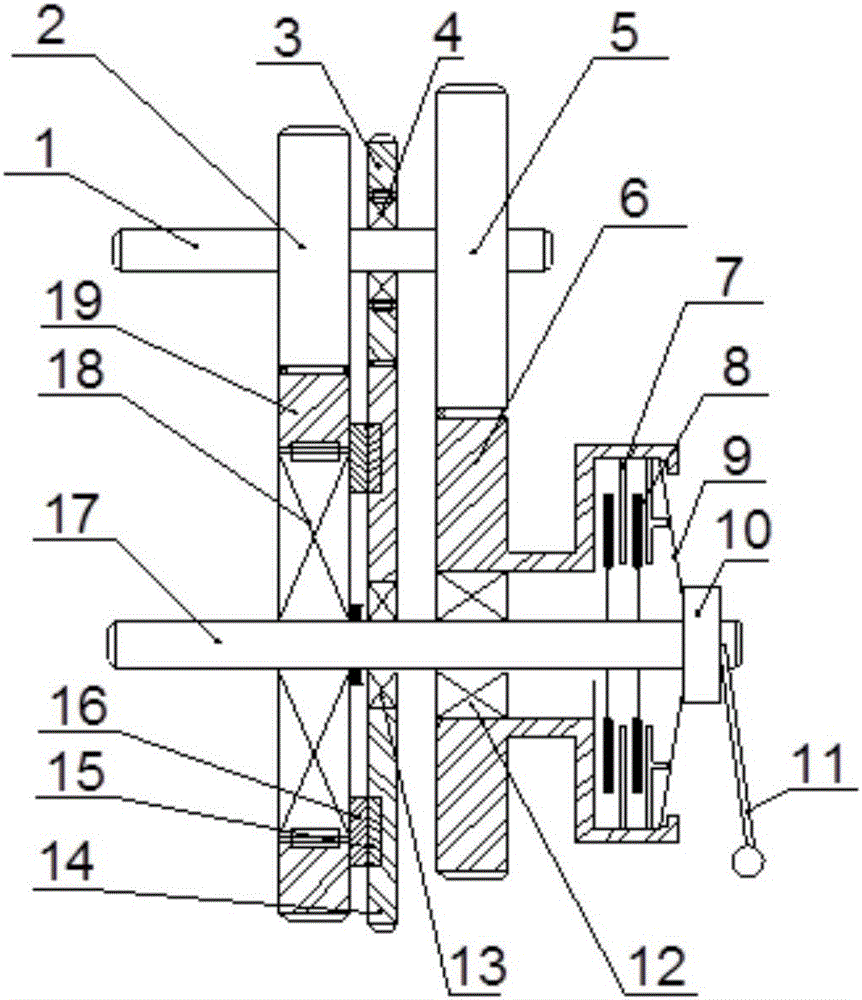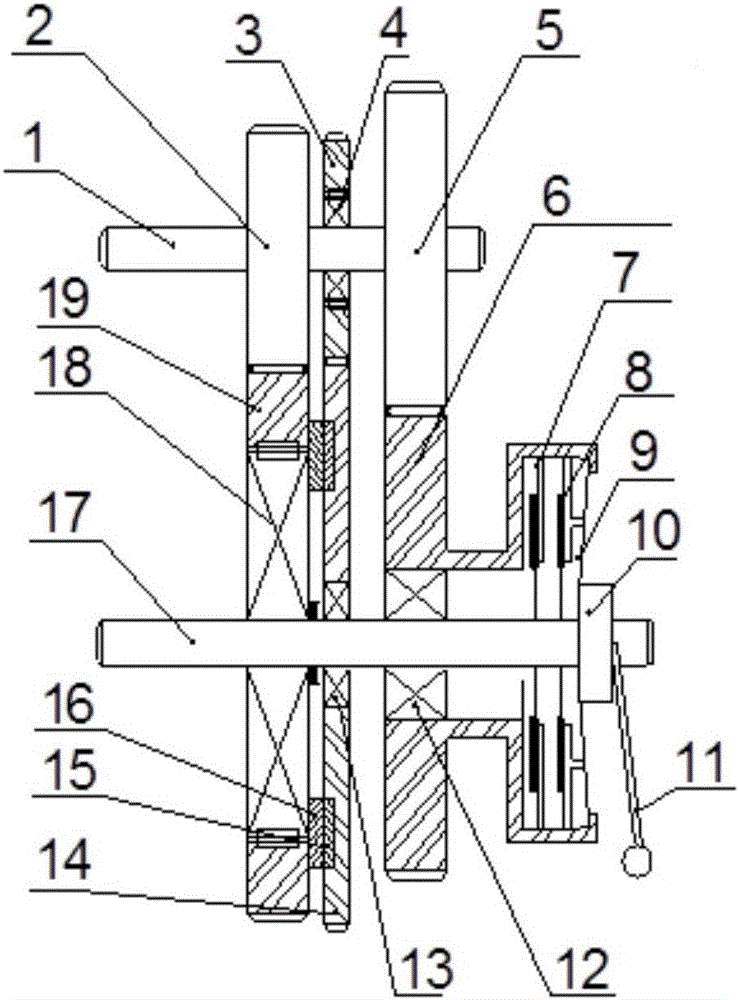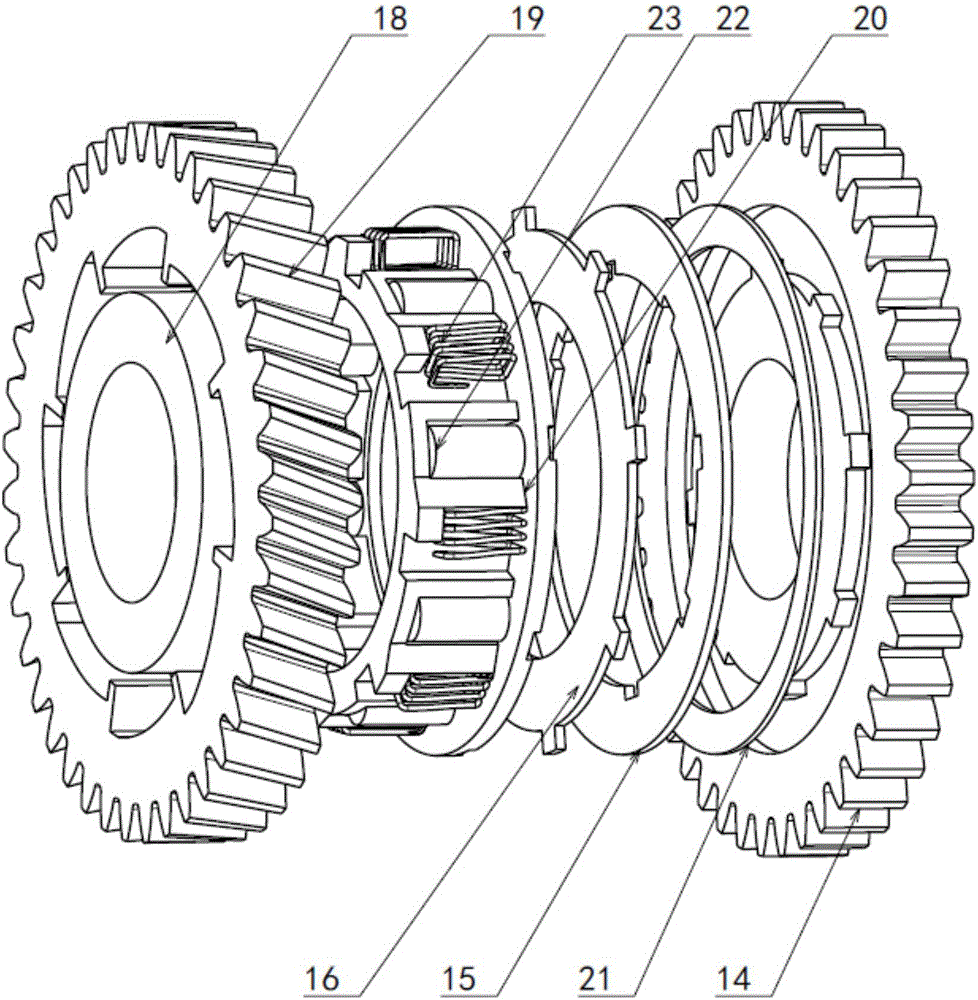Power-interrupting-free shifting speed changing box of electric vehicle and shifting control method of power-interrupting-free shifting speed changing box
A technology of power interruption and gearbox, which is applied in the direction of transmission control, transmission, gear transmission, etc., can solve the problems of affecting the ride comfort of the vehicle, increasing the size of the transmission, power interruption, etc., and achieves low production cost and smooth speed. Simpler effect than switching process and control
- Summary
- Abstract
- Description
- Claims
- Application Information
AI Technical Summary
Problems solved by technology
Method used
Image
Examples
specific Embodiment approach
[0061] In order to further illustrate the technical solution of the present invention, in conjunction with the accompanying drawings, the specific implementation of the present invention is as follows:
[0062] In a nutshell, the gearbox of the present invention is mainly composed of three pairs of gears, two overrunning clutches and a disc clutch, one pair of the three pairs of gears can control the overrunning clutch on the output shaft, and the other two pairs of different transmission The ratio gear pair is two gears, and the transmission ratio of the intermediate gear pair where the overrunning clutch is controlled is greater than the transmission ratio of the first gear pair.
[0063] like figure 1 , figure 2 and Figure 8 As shown, the present invention discloses a non-power interruption shift gearbox for an electric vehicle, which is composed of an input shaft 1, a first gear pair mechanism, a second gear pair mechanism, a plate clutch, an output shaft 17, and a shi...
PUM
 Login to View More
Login to View More Abstract
Description
Claims
Application Information
 Login to View More
Login to View More - R&D
- Intellectual Property
- Life Sciences
- Materials
- Tech Scout
- Unparalleled Data Quality
- Higher Quality Content
- 60% Fewer Hallucinations
Browse by: Latest US Patents, China's latest patents, Technical Efficacy Thesaurus, Application Domain, Technology Topic, Popular Technical Reports.
© 2025 PatSnap. All rights reserved.Legal|Privacy policy|Modern Slavery Act Transparency Statement|Sitemap|About US| Contact US: help@patsnap.com



